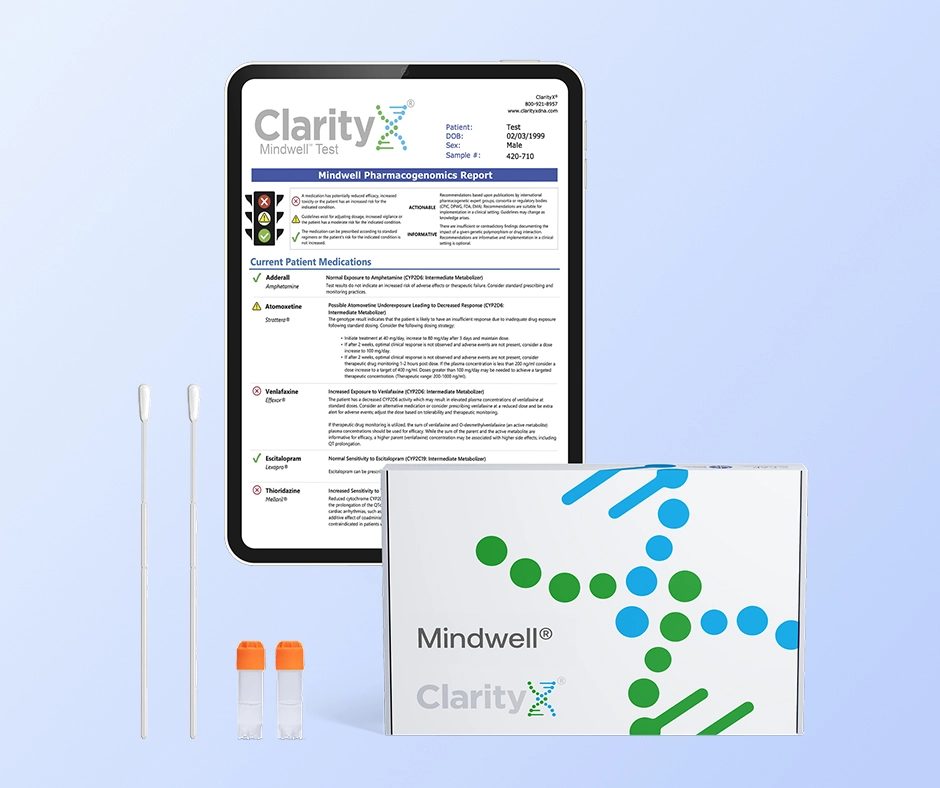Key Highlights
- Dilaudid® (hydromorphone) is a prescribed opioid. It is used to treat severe chronic pain when other treatments do not work.
- The time it takes for pain relief can vary depending on how the medicine is administered. When injected, it typically begins to take effect within 15 minutes.
- Factors such as dosage, administration method, and a person's health, including liver or kidney function, affect how quickly and how long Dilaudid works.
- Dilaudid interacts with opioid receptors in the central nervous system. This changes how we feel pain.
- Regular visits with healthcare professionals are essential for safe and effective pain management.
- Be aware that there are side effects and risks of dependence. This is why careful medical supervision is necessary.
Introduction
If you or a loved one has been prescribed Dilaudid (hydromorphone) for pain relief, you may be wondering how quickly it will start working and what to expect while taking it. As a potent opioid medication, Dilaudid is often used to manage severe pain, but its onset and duration can vary depending on how it’s taken. Whether you’re using tablets, liquid, or injections, understanding the timing can help promote safe and effective use. In this article, we’ll break down how Dilaudid works and some of the factors that may impact its effects.
Understanding Dilaudid and Its Uses
Dilaudid® is a strong painkiller that you can only get with a prescription. It is an opioid used in health care to help with severe or long-lasting pain. Doctors usually prescribe it when other pain medications do not work or when patients are unable to tolerate them. The use of this medication for managing chronic pain has increased, especially when non-opioid medicines don't relieve pain enough.
Because Dilaudid is very strong and can lead to dependence, health care professionals carefully watch how it is used. Both patients and doctors need to balance good pain management with understanding the potential risks and risks of withdrawal symptoms. This way, they can manage pain, minimize side effects, and prevent other complications.
What is Dilaudid?
Dilaudid is the brand name for hydromorphone. It is a powerful opioid medication that belongs to a class of drugs used to treat moderate to severe pain. Doctors prescribe it for moderate to severe pain management. It is effective because it acts on opioid receptors in the nervous system, which transmit pain signals. By interacting with these receptors, Dilaudid helps alleviate pain and alters the body's response to it.
Dilaudid is heavily controlled because it has a high risk of physical dependence and is very powerful. Health care professionals usually give Dilaudid when other pain management methods do not work or are not safe, especially for people with long-term, serious health issues.
Common Indications for Dilaudid in Chronic Pain Management
Dilaudid is used mainly for severe pain that strong non-opioid medicines can't manage, or when weaker opioids don’t work. In dealing with chronic pain, it is offered in health care settings for patients with ongoing, intense pain. This can occur in situations like advanced arthritis, cancer pain, or after major surgeries.
To use Dilaudid safely, doctors must continuously monitor the patient's condition. They evaluate the potential benefits against the risks, such as dependency or serious side effects associated with pain medication. This approach ensures that individuals with chronic pain receive reliable care while minimizing harm.
Mechanism of Action: How Dilaudid Works
Dilaudid works by binding to opioid receptors in the central nervous system, changing how pain is perceived. When taken as directed, Dilaudid can assist with severe pain, making everyday life easier for many people.
Interaction with Opioid Receptors
Dilaudid, also known as hydromorphone, works primarily by binding to mu-opioid receptors in the central nervous system. These receptors are crucial for regulating pain, pleasure, and various bodily responses. When hydromorphone attaches to these opioid receptors, it prevents pain signals from being transmitted, resulting in a significant reduction in pain sensation. Effects in the brain can also include mood changes and euphoria.
For people dealing with chronic pain, the quick action of Dilaudid on opioid receptors can provide faster pain relief compared to many oral medications. However, this quick relief paired with the potential for euphoric effects means that health care professionals need to monitor its use closely to avoid substance abuse, misuse, or dependence arising from proper use.
Effect on Pain Perception and Response
Dilaudid works by altering the way pain is perceived in the body. It acts on the central nervous system and helps alter the signals related to pain in the brain. This doesn't just alleviate pain; it also helps change a person's perception of their symptoms, often reducing feelings of distress.
Many patients notice that they can participate in daily activities more easily, but may also experience a loss of appetite, stomach cramps, a runny nose, and dry mouth. They can also rest more easily, although they should be cautious about the risk of respiratory depression.
Changing nerve activity in the central nervous system can lead to side effects like confusion or drowsiness, which are common side effects associated with CNS depressants, like Dilaudid, alcohol, benzodiazepines, and other medications. These effects can be additive and dangerous, increasing the risk of respiratory depression (ultimately a cause of death in fatal overdoses). It’s critical to avoid mixing Dilaudid with other CNS depressants.
Factors Influencing Dilaudid's Onset of Action
The time it takes for Dilaudid to start working depends on several factors. These include the specific type of Dilaudid administered, the method of administration, and the patient’s individual characteristics. For example, intravenous injections typically work more quickly than oral forms. However, factors such as age, metabolism, liver and kidney function, and overall health are also important.
Dosage Forms and Their Impact
Dilaudid is available in various dosage forms to accommodate the needs of different patients. These include oral tablets, oral solutions, and injectable forms, each with unique characteristics that influence the onset and duration of pain relief.
The following table compares the onset times and typical uses:
Selecting the best dosage form depends on the patient's needs, their health status, and the urgency of pain control. Health care providers evaluate these factors before prescribing a particular form to ensure optimal pain relief with minimal side effects.
Individual Factors That Affect Opioid Activity
Individual health differences are important factors in determining how well Dilaudid works and how quickly it provides relief. Patients with liver disease might break down hydromorphone more slowly. This can increase the likelihood of side effects. On the other hand, those with kidney disease might not clear the drug properly, which can cause buildup and increase the risk of negative reactions.
Body weight and composition also affect how Dilaudid is absorbed and distributed throughout the body. Heavier patients or those with more body fat might feel the effects later or differently than others.
Hydromorphone is an active metabolite of other opioids (e.g., hydrocodone), and genetics can play an important role in determining which medication and dosage may be safe and effective.
Because of these personal differences, what works fast for one person may take longer or carry more risks for someone else. Health care professionals adjust Dilaudid dosages carefully based on individual medical history and response.
Administering Dilaudid for Pain Relief
Effective and safe pain relief with Dilaudid depends on careful use.
Recommended Dosages for Chronic Pain
Dilaudid dosage for chronic pain varies for each individual. It depends on the severity of their pain, whether they have used opioids before, and their overall health. Initially, doctors typically prescribe low doses, especially for those who have not previously used opioids. This approach helps minimize side effects while effectively managing severe pain.
The starting dose for the injectable and oral forms is often 1 to 2 mg as needed. For those who are already using opioids, the initial dosage may be increased based on potential opioid resistance and provider discretion.
In general, Dilaudid is used at the lowest effective dose for the shortest duration possible to help minimize the risk of dependence.
Conclusion
Dilaudid can provide powerful relief for severe pain, but how quickly it works can vary slightly depending on the form being used. Injectables tend to become effective within minutes, while oral forms may take about 30 minutes because they enter the bloodstream more slowly. Regardless of the form used, it’s vital to use Dilaudid carefully due to significant risks like CNS depression (e.g., respiratory depression and overdose risk) and the potential for misuse and dependence.
Lastly when considering treatment options like Dilaudid your genetics can also play a vital role in determining which medications will be best suited for you. A simple test can help reduce the trial and error process associated with finding the right medication. Find out more by visiting www.clarityxdna.com
Frequently Asked Questions
How quickly can I expect pain relief after taking Dilaudid?
Pain relief from Dilaudid injections typically begins within 5 to 15 minutes. If taken orally, it may take 15 to 30 minutes. How fast it works can depend on how you take it and your health. Always follow your healthcare provider’s guidance for treating chronic pain.
Are there any non-drug alternatives that work as fast as Dilaudid?
Most options for pain relief that do not involve drugs, like physical therapy or mindfulness practices, do not work as quickly as Dilaudid. However, it's essential to consider the role of mental health. Talk with your health care provider about adding these methods for a complete pain management plan.
What precautions should I take when using Dilaudid for chronic pain?
When you use Dilaudid for chronic pain, make sure to follow your prescribed amount closely. Stay away from alcohol and tell your health care provider about any new pain, increased sensitivity to pain, or worsening symptoms. Don't change your treatment without getting medical advice, especially if you have severe pain or notice side effects.
How does Dilaudid compare to morphine for pain management?
Dilaudid is usually stronger than morphine. This means you need smaller amounts of it to manage pain in the same way through opioid receptors. Due to its increased potency, it is particularly important to ensure that the medication is used only by the person for whom it has been prescribed. For instance, the use of a single dose by a child has the potential to be fatal.
Can I build a tolerance to Dilaudid, and what can I do about it?
Yes, you can become tolerant to Dilaudid if you use it for a long time to treat chronic pain. If it stops working as well, talk to your health care provider. They may suggest changing your dose or switching to a different medication. Don’t increase the dose by yourself. Always ask for medical advice to manage your ongoing treatment.
References
https://dailymed.nlm.nih.gov/dailymed/drugInfo.cfm?setid=8bb81796-6990-40e9-bee4-1f292f91ae99
https://www.ncbi.nlm.nih.gov/books/NBK459161/
https://www.ncbi.nlm.nih.gov/books/NBK470393/
https://files.cpicpgx.org/data/guideline/publication/opioids/2020/33387367.pdf
https://clarityxdna.com/blog/learn/genetic-testing-for-pain-management-medication/






